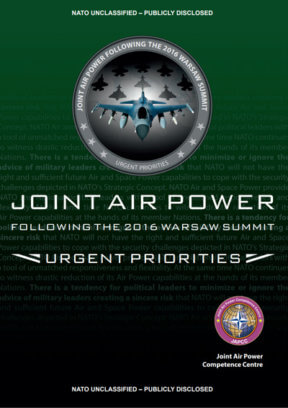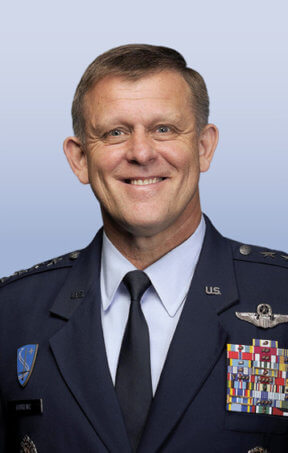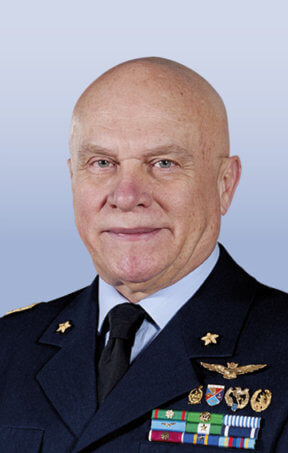Foreword
NATO is facing an increasingly diverse, unpredictable and demanding security environment, ‘an arc of insecurity and instability along NATO’s periphery and beyond’.1 In recent times this has led to a range of steps by NATO to reinforce its collective defence, enhance its capabilities, and strengthen its resilience. NATO has committed itself to provide its armed forces with sufficient and sustained resources, thereby underlining its stated strategic intent that ‘NATO’s essential mission is unchanged and that NATO will ensure that it has the full range of capabilities necessary to fulfil the whole range of Alliance missions, including to deter and defend against potential adversaries, and the full spectrum of threats that could confront the Alliance from any direction’.
NATO’s Joint Air Power forms an essential part of this set of necessary capabilities and competencies. Since the end of the Cold War, we have witnessed an increase in NATO’s use of Joint Air Power, providing NATO and national leaders with a tool of unmatched responsiveness and flexibility.
Despite the strategic and operational importance of Joint Air Power, NATO nations, unfortunately, have drastically reduced their air power capabilities in recent years to the extent that there is a sincere risk that NATO will not have the required Joint Air Power capabilities and competencies to support the whole spectrum of Alliance operations and missions. This existing Joint Air Power problem, in conjunction with the changing international security situation on the periphery of NATO, has reinforced the need for the Alliance and its Member States to urgently address the shortfalls in the field of NATO Joint Air Power capabilities and competencies.
In 2014, the JAPCC completed the Future Vector Project, identifying viable options and realistic solutions to chart the path to guarantee that both Joint Air Power and assured access to relevant space-based data and information continues to contribute to the success of NATO and its Member States. Through a series of essays, a team of acknowledged experts in security and defence policy provided an extensive and balanced perspective including a broad range of recommendations.
During the 2014 Wales Summit, Heads of State and Government (HOS / G) stated that ‘… NATO joint air power capabilities require longer-term consideration’. Since then, NATO has taken specific steps to address this issue. One of the steps taken was a specific task to the Strategic Commands (SCs), with ACT in the lead, to provide recommendations for a long-term approach that will inform the future development of joint air power while also identifying the medium to long term Joint Air Power capability requirements that could be included in the context of the NATO Defence Planning Process. The Bilateral Strategic Command (BI-SC) final report on Joint Air Power Capabilities (JAPC), encompassing a broad range of recommendations, was presented to NATO in Brussels in December 2015. The report concluded that ‘Joint Air Power will continue to be a vital, often first called upon capability for the Alliance’2 to achieve its desired aims.
The Warsaw Summit Communiqué is the most current expression by the HOS / G of NATO of key security concerns and focus areas. It re-emphasized the need for the Alliance and its Member States to address shortfalls in essential capabilities and competencies. It is critical not to lose the momentum, and to further bring into focus the essence and intent of both the Communiqué and the outcome of other recent Joint Air Power studies.
Therefore, HQ SACT commissioned JAPCC to conduct the study ‘Joint Air Power following the 2016 Warsaw Summit – Urgent Priorities’ to provide a coherent set of urgent strategic, short to medium term priorities in the field of Joint Air Power capabilities and competencies, linked to the main areas of interest and concern as expressed in the 2016 Warsaw Summit Communiqué. This study will contribute to the discussion of required capabilities and competencies as part of the NATO Joint Air Power Strategy currently being drafted under the leadership of ACT.
I strongly encourage you to read this publication as it offers ideas and potential solutions to enhance NATO’s Joint Air Power. Considering the current security challenges and threats, it’s now time to act to guarantee that Joint Air Power in NATO is sufficiently available and fit for purpose when most needed in NATO, anywhere, anytime.Joachim WundrakLieutenant General, DEU AF / Executive Director, JAPCC / Project Leader
Joachim Wundrak
Lieutenant General, GE AF
Executive Director, JAPCC













